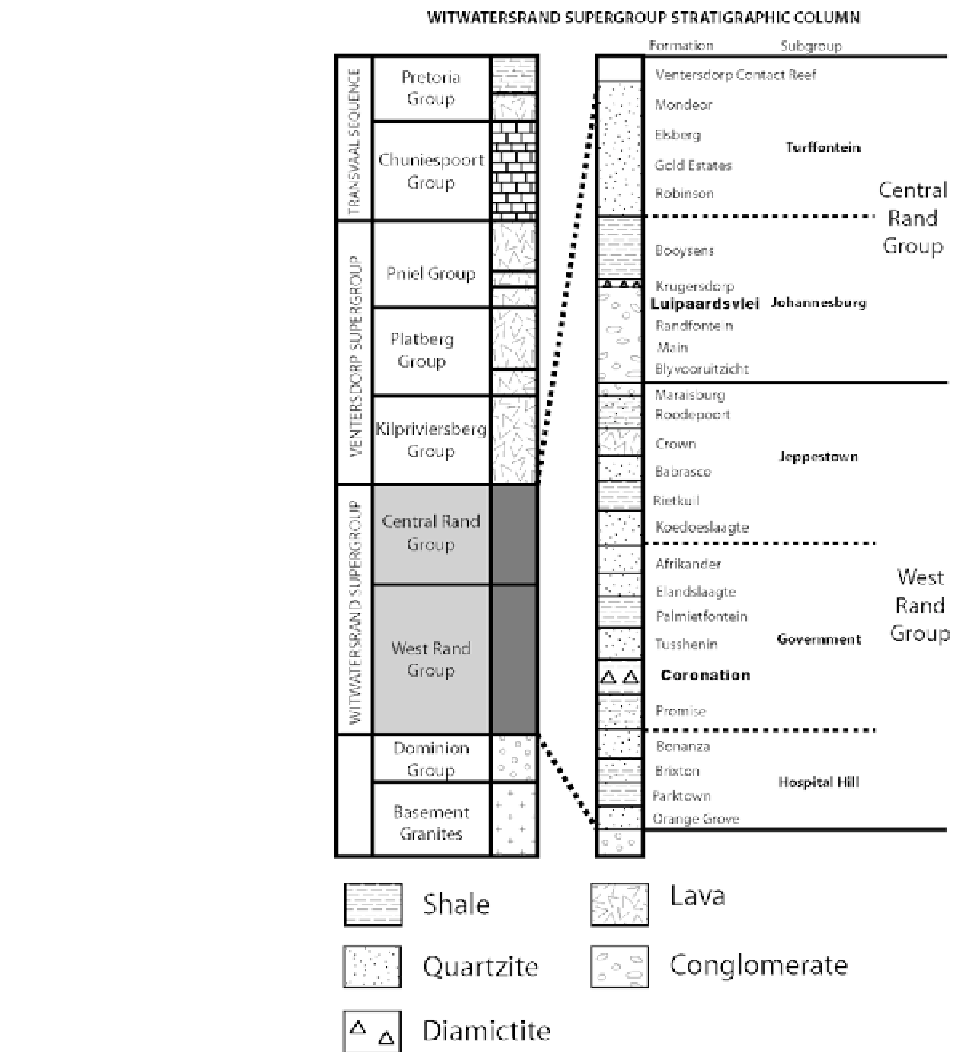Geology Reference
In-Depth Information
Fig. 15.10
Generalized
lithostratigraphical column
of the Witwatersrand
Supergroup and its
relationship to underlying and
overlying stratigraphic units
(Modified from Catuneanu
and Biddulph
2001
). Note the
positions of the Coronation
and Luipaardsvlei formations
Cosets vary from 20 to 210 cm thick. In several cases,
laminated sandstone, siltstone and mudstone, and
wave- and combined-flow ripple bedforms are pre-
served below coset boundaries. Within sets, foresets
are tangential, planar or sigmoidal in shape and, toward
the top of upward-fining packages, commonly are
draped with mudstone and equate to tidal bundles
(Fig.
15.18
). In general, thin foresets have continuous
mudstone drapes whereas thicker foresets have discon-
tinuous drapes or are separated by mudstone chips.
In bedding plane views, these chips display polygonal
desiccation cracks. Reactivation surfaces are present
throughout the section. Laterally within sets a syste-
matic thickening and thinning of foresets occurs with a
corresponding increase in development of mudstone
drapes associated with thinner foresets. Some foresets

